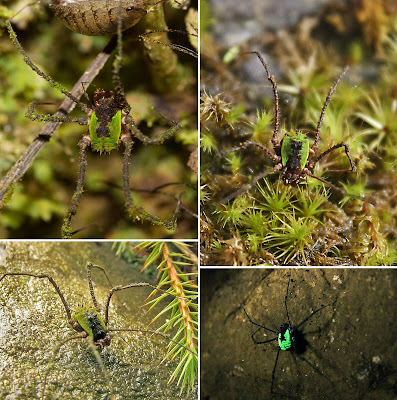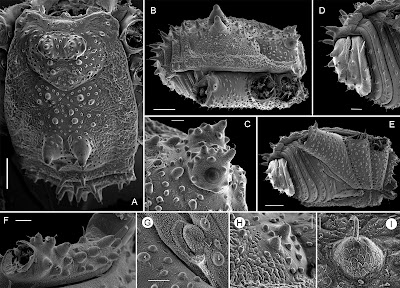Abstract
Based on the most recently published morphological cladistic analysis of the family Agoristenidae, the taxonomic position of an undescribed harvestman species was evaluated. According to the results of an updated phylogenetic analysis, the description of a new monotypic genus is proposed to accommodate this new species. The diagnostic characters of the new genus are: free tergites II and III with three large tubercles, and femora and tibiae of legs II–IV with longitudinal rows of conspicuous tubercles. Muscopilio onod gen. et sp. nov. inhabits Andean rainforests in Cundinamarca department, Central Colombia. Remarkably, almost all individuals collected in the field had at least three families of bryophytes, including mosses (Leucomiaceae) and liverworts (Plagiochilaceae, Lejeuneaceae), growing on their legs, and suggesting a mutualistic relationship between epizoic organisms and harvestmen.
Keywords: Andes, Bryophytes, Epibiont, Laniatores, Leiosteninae, Mutualism
Muscopilio Villarreal & García gen. nov.
Type species. Muscopilio onod sp. nov., here designated by monotypy.
Etymology. From the Latin words muscus (= moss) + pre-existing genus Opilio. Gender masculine.
Muscopilio onod Villarreal & García sp. nov
Etymology: In the fictional Sindarin language, created by J.R.R. Tolkien, Onod (plural Onodrim) is the name given to the giant tree-like beings, also known as Ents. For us, the new species, greenish in color and with the legs covered by bryophytes, resembles an Onod. Noun in apposition.
Osvaldo Villarreal and Andrés F. García. 2021. On the Phylogenetic Relationships of Muscopilio, A New Andean Genus of Basibiont Harvestmen (Opiliones: Agoristenidae). Zoologischer Anzeiger. 292; 150-162. DOI: 10.1016/j.jcz.2021.03.006





